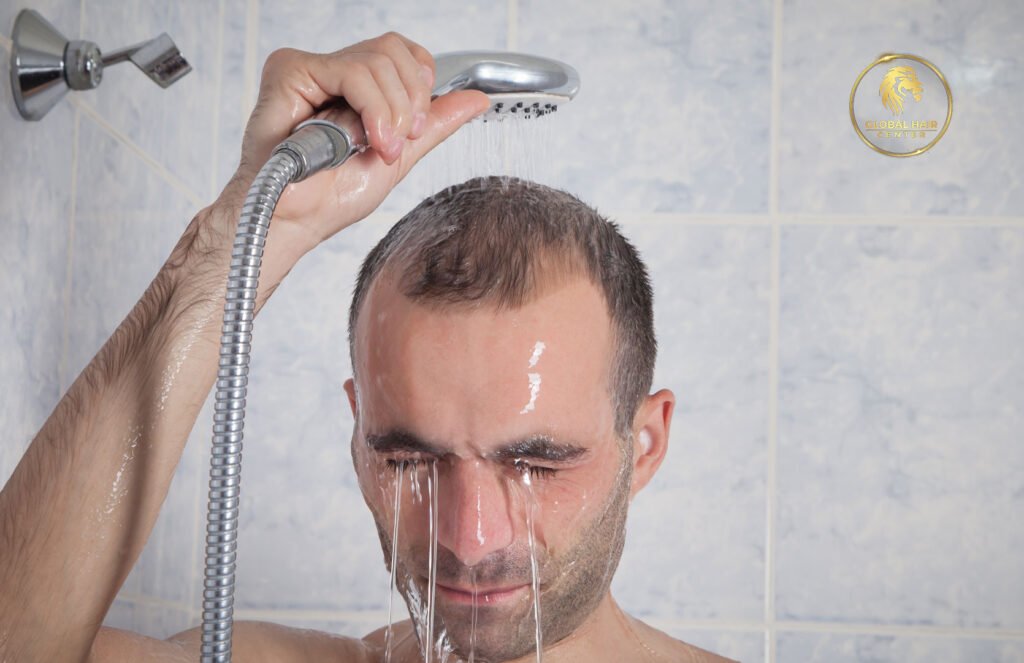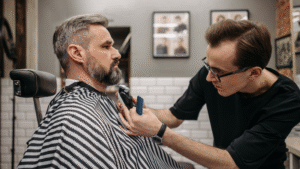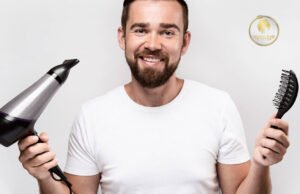When Can You Wash Your Hair Normally After a Hair Transplant?

When Can You Wash Your Hair Normally After a Hair Transplant?
Undergoing a hair transplant marks a significant step towards restoring your natural hairline and reclaiming confidence. Proper post-operative care is crucial for ensuring successful results, and one common concern among individuals undergoing this procedure is when they can safely resume their normal hair-washing routine.
Healing Process Phases
After a hair transplant, your scalp goes through several stages of healing, each requiring specific care. We’ll explain each step and what happens in it.
Immediate Post-Operative Phase (Days 1-3)
Your doctor may provide instructions on how to care for the transplanted area immediately after the procedure. Typically, the recipient area is kept dry for the first day or two to allow the grafts to settle.
Initial Recovery Phase (Days 4-7)
During this period, you may start gently washing the donor area (where hair follicles were harvested) with mild shampoo as instructed by your doctor. The recipient area is still delicate and requires gentle handling.
Settling Phase (Weeks 1-2)
By this stage, the transplanted grafts begin to take root. You may be advised to continue gentle washing of the donor area and to avoid direct pressure or scrubbing of the recipient area.
Early Growth Phase (Weeks 2-4)
New hair growth may begin, and your scalp may start to return to normal. You can gradually increase the thoroughness of washing, still being cautious around the recipient area.
Established Growth Phase (Months 2-6)
The transplanted hair continues to grow, and your scalp fully heals. You can typically resume your regular hair-washing routine, treating the transplanted hair like your natural hair.
Tips for Washing Your Hair After a Hair Transplant
- Use a Mild Shampoo: Opt for a gentle, sulfate-free shampoo recommended by your doctor or dermatologist. Avoid shampoos containing harsh chemicals that could irritate your scalp.
- Gentle Handling: Be gentle when washing and rinsing your hair to avoid damaging newly transplanted grafts. Pat dry your scalp with a soft towel and avoid vigorous rubbing or scrubbing.
- Avoid Hot Water: Use lukewarm water when washing your hair to prevent scalp irritation and protect delicate grafts.
- Follow the doctor’s Advice: Your doctor knows your individual case best. Follow their specific instructions for post-operative care, including hair-washing guidelines.
- Monitor Scalp Health: Watch for signs of infection, excessive redness, or swelling. If you notice any unusual symptoms, contact your doctor immediately for guidance.
Post-Operative Care Specifics
Scalp cleanliness
Keeping the scalp clean is crucial for preventing infection and promoting healing. Follow your doctor’s advice on how often to wash your hair initially. Refrain from scratching or touching the scalp excessively, especially around the recipient area, to minimize the risk of dislodging grafts.
Shampooing Techniques
Massage gently and use your fingertips to massage the shampoo into the scalp with gentle circular motions. Avoid using your nails or applying excessive pressure. Ensure all shampoo residue is thoroughly rinsed out to prevent irritation.
Conditioning After a Hair Transplant
Choose a conditioner that is lightweight and formulated for sensitive scalps. Apply it moderately, focusing on the ends rather than the scalp. Consider using leave-in conditioners or conditioning sprays for added moisture without weighing down the hair.
Drying Techniques
After washing, gently pat your scalp dry with a soft towel. Avoid rubbing vigorously, as this can cause friction and potentially dislodge grafts. Whenever possible, allow your hair to air dry naturally. If using a blow dryer, use the lowest heat setting and keep it at a safe distance from the scalp to prevent damage.
Handling Itching and Sensitivity
Itching is a common post-operative symptom. Use a clean, soft cloth to lightly dab the itchy areas instead of scratching. Your doctor may recommend gentle topical treatments to alleviate itching and reduce inflammation.
Long-Term Maintenance
Product selection is very important for long-term maintenance. Even after the initial recovery phase, continue using gentle, sulfate-free products recommended for sensitive scalps to maintain scalp health. Avoid harsh chemicals and steer clear of hair styling products that contain alcohol or harsh chemicals that can irritate the scalp or weaken hair follicles.
Protecting Your Scalp
Protect your scalp from UV rays by wearing a hat or applying sunscreen specifically designed for the scalp. Be mindful of activities that could potentially traumatize the scalp, such as vigorous towel drying or wearing tight headgear.
Nutritional Considerations
Maintain a diet rich in vitamins and minerals essential for hair health, such as vitamin D, biotin, and omega-3 fatty acids. Drink an adequate amount of water daily to keep your scalp and hair follicles hydrated.
Consultation and Follow-Up
- Follow-up appointments: Attend all scheduled follow-up appointments with your doctor to monitor progress and address any concerns.
- Adjusting care: Your doctor may adjust your hair care routine based on your healing progress and the appearance of newly transplanted hair.
- Patience is key: Understand that hair transplant results take time to fully manifest. New hair growth typically begins within a few months, but it may take up to a year to see significant results.
- Managing expectations: Discuss realistic timelines and outcomes with your doctor to ensure you have a clear understanding of what to expect.
Addressing Common Concerns
- Hair shedding: It’s normal to experience shedding of transplanted hair within the first few weeks. This is part of the natural hair growth cycle and does not necessarily indicate graft failure.
- Infection prevention: Follow proper hygiene practices and monitor your scalp for any signs of infection, such as increased redness, swelling, or drainage.
Emotional and Psychological Support
Lean on friends, family, or support groups to create a support network that can help you through the emotional aspects of recovery and managing expectations. Engage in activities that promote relaxation and stress reduction as a part of your self-care routine, which can positively impact your overall well-being and recovery.
Personalizing Your Hair Care Routine
Your doctor can provide personalized recommendations based on your specific hair type, scalp condition, lifestyle factors, and the technique used for the hair transplant such as FUE. As your scalp heals and new hair grows, you may need to adjust your hair care routine or use additional treatments such as plasma accordingly.
FAQs About Hair Care After the Procedure
When can I use regular hair products?
Wait until your doctor gives you the green light, usually after the initial healing phase (around weeks 2-4). Choose products that are gentle and suitable for sensitive scalp.
Can I resume hair dyeing or styling treatments?
Wait until your scalp is fully healed and consult with your doctor or dermatologist before resuming any chemical treatments.
How do I manage itching or discomfort?
Your doctor may recommend gentle massage or topical treatments to alleviate itching. Avoid scratching or rubbing the scalp forcefully.
Conclusion
Proper care and patience are essential for achieving successful results after a hair transplant, including when and how to wash your hair. By following these guidelines and consulting with your doctor, you can ensure a smooth recovery and promote healthy hair growth.
Remember, every individual heals differently, so listen to your body and prioritize scalp health throughout the recovery process.
Ready to start your hair care journey? Contact Global Hair Dubai and book your free consultation session Today!

Beard Transplant in Dubai: Restore Your.
Facial hair has always been a symbol of masculinity, maturity, and strength. However, not all men are naturally gifted with.
Read More
From Evaluation to Results: Understanding Mustache.
From Evaluation to Results: Understanding Mustache Hair Transplants A mustache is often seen as a defining feature of masculinity and.
Read More

